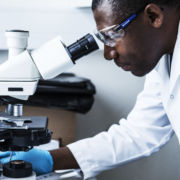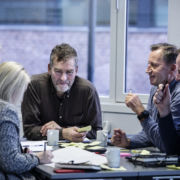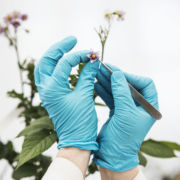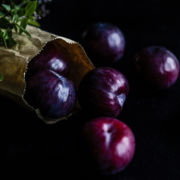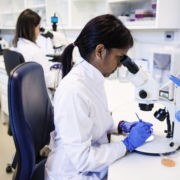NEWS: Consumer choice in a broader perspective
Importing foods is one of many ways resistant bacteria can spread. When we buy products from animals that have received a lot of antibiotics, we help maintain a type of food production that contributes to the development of antimicrobial resistance in the world,» says Peer Ola Hofmo, Chief Veterinarian at Norsvin.
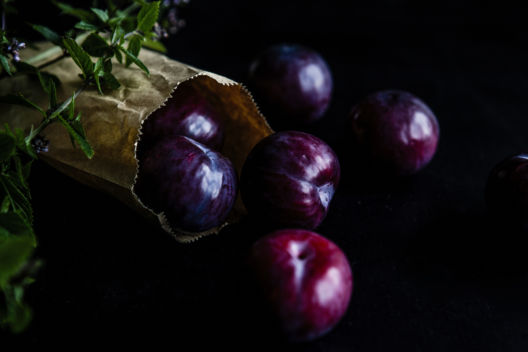
In the store you can choose from products from many different countries.
Some countries use large amounts of antibiotics on animals.
In Norway, the rules of antibiotic use in food production are strict, and we have a solid tradition of ensuring good health in the animals, rather than medicating them.
As NCE Heidner Biocluster mentions in this article, there are major differences in antibiotic use between countries, also in Europe where we in Norway use the least. But we import foods from countries where animals receive more antibiotics than here, and where the problem of resistant bacteria, both among humans and animals, is greater than in Norway.
Researchers find few resistant bacteria when they test for some in Norwegian meat products.
In European countries, it is more common to find them. And most findings of resistant bacteria in meat products appear to be in the southern countries, both eastward, westward and in the middle of the European map, according to the latest NORM-VET report.
Good kitchen hygiene gives greater security
You can reduce any risk of getting microbes, both resistant and non-resistant, from food, by following the Food Safety Authority’s rules on cooking hygiene that should apply irrespective of where the food comes from.
You should wash hands, keep raw and prepared food separate, use clean utensils and heat treat properly. Whether bacteria are antibiotic resistant or not, most of them will die after several minutes with 70-degree heat. Read more good advice at Matportalen.
It is also useful to know a little about where bacteria can be located on a food item. For example, an entire piece of meat will not have bacteria inside the tissue itself. If you fry a steak on all sides, it will probably do the trick.
“Bacteria are located on the skin, mucous membranes and in the intestine. But the surface of the meat can be contaminated with bacteria, for example in the slaughter process or further in production”, explains Peer Ola Hofmo, Chief Veterinarian at Norsvin, to NCE Heidner Biocluster.
Minced meat, on the other hand, should be roasted, and it also applies to poultry meat. Berries, fruits, and vegetables should always be rinsed before eating them. And some imported plant products should be heat treated, according to the Food Safety Authority. This includes fresh baby corn, sugar peas, asparagus, spiced herbs, and frozen berries.
But from the bacteria’s perspective neither you nor your kitchen are so important. They spread regardless, along many routes and become hardier when we misuse and overuse antibiotics.
The biggest problem with buying meat from animals that are treated with a lot of antibiotics is not really that it can contain a resistant bacterium, Peer Ola Hofmo believes.
A bigger perspective
«The biggest problem is that we support a way to produce food that is illegal in this country,» says Hofmo. And here both the grocery industry and the Norwegian authorities could have taken more responsibility, he believes.
What provokes me is that the grocery industry closes its eyes to how food is produced. They import meat from herds where the meat is produced in a way that is illegal in Norway.
The argument may be that the animals are slaughtered at EU-approved slaughterhouses, but this says nothing about the way the meat is handled before the animals arrived at the slaughterhouse”, according to Hofmo. When we as consumers buy meat produced with a lot of antibiotics, we help maintain a type of production that contributes to the development of antimicrobial resistance in the world.
»That’s my greatest concern,» says Hofmo.
Building on decades of work
In Norway, the animals need little antibiotics because they are in good health.
The Norwegian livestock industry has been working purposefully and preventively with this for decades. For example, we have measures to prevent mastitis in dairy cows. And breeding that ensures good hold around the shoulder blade of the sows, prevents bedsores while the piglets suckle.
And the work pays off.
«Throughout the 2000s, we saw the ONE HEALTH perspective more clearly,» says Peer Ola Hofmo.
«For the producers, the main argument, at least in the beginning, was to ensure healthy animals’ herds. But the spinoff effect is that we have virtually no antimicrobial resistance in the Norwegian livestock industry today,» says Hofmo. «We started in the 1980s, with vaccination instead of treating pigs with piglet diarrhea, we got a pig health service and eventually infection protection. Now we are reaping the benefits of all this work.
For Hofmo, awareness of antibiotic resistance has been for a long time. Already in 1998, in the trade magazine Svin, Hofmo wrote, «Are we at full speed into the post-antibiotic era?»
Society must work as one against antibiotic resistance and be conscious that humans can also spread bacteria to animals, which in turn can contaminate humans, he believes.
Has effect beyond the animal being treated
«There is an insane number of bacteria in us and in all animals, absolutely everywhere. It is a separate bacterial world, and everything we do to influence that world in one way or another will have an effect beyond each of us or beyond the animal being treated,» says Anne Margrete Urdahl of the Norwegian Veterinary Institute.
«If I take antibiotics, it will change my bacterial flora and have an effect outside of me. The more we affect the bacteria, the greater the effect it will eventually get, without it being so easy to say what that effect will be.
We also do not know all bacteria and how they react. But we know that developing resistance is the bacteria’s natural protection mechanism, and they will continue to do so,» says Urdahl.
That is why Norwegian food producers are working to contribute to a continued low resistance in Norway.
«The efforts put down on farms every day are very important for us to continue to say that the animals are healthy and the food is safe,» said the CEO of the Norwegian Food Safety Authority, Ingunn Midttun Godal, when the NORM-VET report was presented in September.






